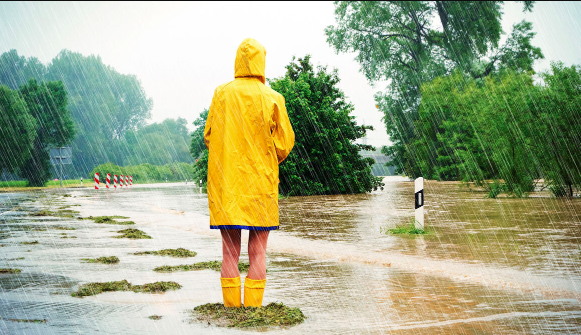How Weather Conditions Impact Exterior House Painting: Best Practices for Different Climates

Remodeling a house in Arizona can be a tough deal to crack due to certain factors from painting your house interior or exterior to Cabinet Painting Arizona you’ll need a considerate eye. When it comes to painting the exterior of your house, weather conditions play a crucial role in the success and longevity of the paint job. The elements can greatly impact the application, drying process, and overall durability of the paint. To ensure a beautiful and long-lasting finish, it’s important to understand how different weather conditions can affect your exterior house painting project. In this blog, we will explore the impact of various weather conditions and provide tips for painting in different environments.
Humidity:
Humidity levels can significantly impact the drying time and overall quality of the paint job. High humidity can cause the paint to take longer to dry, leading to extended drying times and increased vulnerability to dust and dirt. Excessive moisture in the air can also affect the paint’s adhesion and cause blistering or peeling. On the other hand, painting in low humidity can cause the paint to dry too quickly, resulting in a compromised finish. It’s generally recommended to paint when the humidity levels are between 40% and 70% for optimal drying conditions.
Rain
Painting during rainy weather is a big no-no. Rainwater can wash away fresh paint, leaving unsightly streaks and patches. Additionally, moisture from rain can prevent proper adhesion and drying of the paint, leading to an uneven and less durable finish. It’s crucial to check the weather forecast and choose a dry period with no rain in the forecast. Allow sufficient time for the paint to dry before any chance of rain. If unexpected rain occurs during the painting process, cover the freshly painted surfaces immediately to protect them from water damage.
Wind
Wind can create several challenges during exterior house painting. Strong gusts of wind can blow dust, leaves, and debris onto freshly painted surfaces, compromising the smoothness and quality of the finish. It can also cause the paint to dry too quickly, leading to visible brush marks or roller lines. If you’re painting on a windy day, take extra precautions to protect the surrounding area from debris and ensure proper coverage and adhesion of the paint. Consider using drop cloths and plastic sheeting to shield the work area from wind-blown particles.
Sunlight
Direct sunlight can affect the application and drying process of the paint. It’s best to avoid painting in direct sunlight, especially during the peak hours of the day when the sun is the strongest. The heat from the sun can cause the paint to dry too quickly, leading to brush marks, roller lines, or an uneven finish. It’s recommended to paint in shaded areas or when the surfaces are not directly exposed to intense sunlight. If painting in direct sunlight is unavoidable, consider painting in smaller sections or using additives that slow down the drying time.
Best Practices for Different Climates
Different climates present unique challenges when it comes to exterior house painting. Considering the specific weather conditions in your area and adjusting your painting practices accordingly can help you achieve the best results. Here are some best practices for different climates:
Hot and Dry Climates
In hot and dry climates, such as desert regions, it’s essential to choose paint that can withstand high temperatures and resist fading. Opt for paints with UV protection to prevent color fading. Painting during cooler parts of the day, such as mornings or evenings, can help the paint dry more evenly. Hydration is crucial, so ensure the surfaces are properly cleaned and hydrated before painting.
Humid Climates:
In humid climates, such as coastal areas, moisture is a significant concern. Choose paints that are specifically formulated to resist mildew and moisture. Proper surface preparation is crucial to ensure good adhesion and prevent moisture-related issues. Consider using a primer designed for humid conditions. Painting during dry and less humid periods can help the paint dry properly.
Cold Climates:
In cold climates with freezing temperatures, it’s important to avoid painting during extreme cold weather. Paint requires a certain temperature range to dry and cure properly. It’s recommended to paint during milder seasons, such as spring or fall, when the temperatures are above freezing. Ensure the surfaces are free of frost, ice, and moisture before painting.
Rainy Climates:
In wet and rainy climates, timing is crucial. Avoid painting during periods of heavy rainfall to prevent the paint from being washed away or compromised. Plan your painting project during drier seasons or when the weather forecast predicts a stretch of dry days. Ensure the surfaces are completely dry before painting and use high-quality exterior paints that offer good water resistance.
In conclusion, weather conditions have a significant impact on exterior house painting. Temperature, humidity, rain, wind, sunlight, and seasonal considerations all play crucial roles in the success and longevity of the paint job. By carefully planning your painting project and considering these factors, you can achieve a beautiful and long-lasting finish. Consult the paint manufacturer’s guidelines, check the weather forecast, and choose the right conditions for your exterior painting project. With proper preparation and attention to weather conditions, you can protect and enhance the beauty of your home for years to come.





